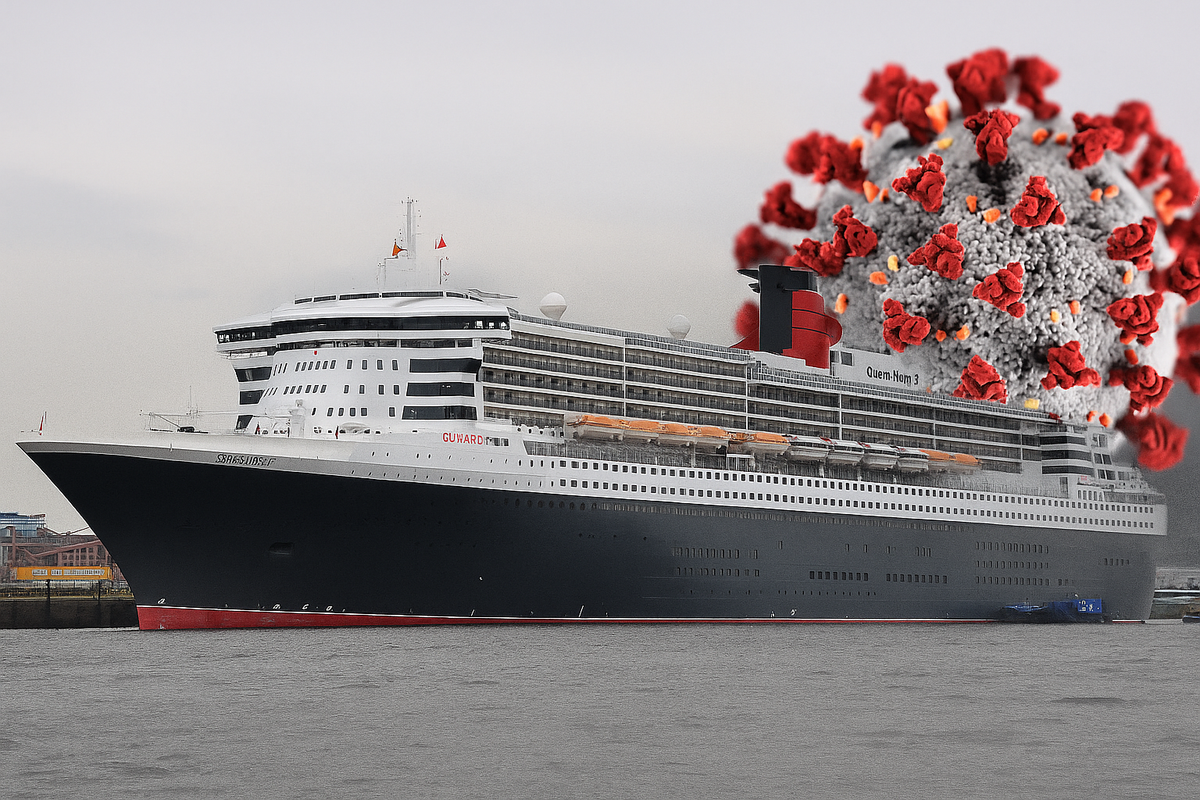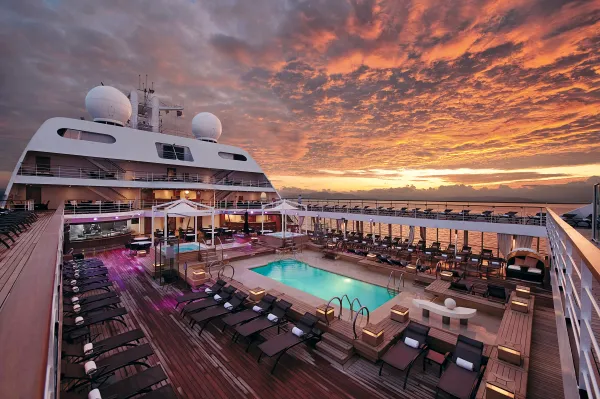Queen Mary 2 Norovirus Outbreak Highlights Rising Strain on Cruise Ships
The Queen Mary 2 outbreak highlights how cruise ships are contending with a more transmissible norovirus strain, as health officials and operators reinforce sanitation to protect travelers.

Norovirus outbreaks are continuing to challenge cruise lines in 2025, with luxury vessels reporting notable increases in illness. One of the most prominent incidents involves Cunard’s iconic Queen Mary 2, where at least 224 passengers and 17 crew members, about 9% of those onboard, fell ill during a 29-day voyage from Southampton to the Caribbean. The U.S. Centers for Disease Control and Prevention (CDC) has confirmed that a newly dominant strain, known as GII.17, is likely contributing to higher transmission rates across multiple cruise ships this year.
Outbreak Aboard the Queen Mary 2
According to the CDC, passengers on the Queen Mary 2 began experiencing diarrhea, vomiting, nausea, and stomach cramps about 10 days into the journey. Stool tests are underway to confirm the infection’s specifics, but preliminary findings point to norovirus. Cunard officials report that swift cleaning routines and isolating ill individuals have helped limit further spread, with most passengers recovering quickly. “We have implemented comprehensive cleaning procedures and are closely monitoring all reports of illness on our vessels to ensure the well-being of our guests and crew,” noted a Cunard spokesperson.
This recent outbreak underscores norovirus’s persistence in confined environments, where the virus can survive on surfaces for days and spread through contact with infected individuals or contaminated food and water. Despite these challenges, Cunard expressed confidence that ongoing sanitation protocols will keep the situation under control as the ship nears the end of its itinerary, slated to conclude in Southampton.
CDC Response and Vessel Sanitation Program
The Vessel Sanitation Program (VSP), managed by the CDC, is tasked with overseeing health standards on cruise ships. Despite facing reduced staffing, the CDC affirms its core responsibilities, tracking norovirus outbreaks, inspecting ships, and guiding sanitation measures continue unabated. So far this year, U.S. ports have recorded 12 countable outbreaks, with norovirus responsible for at least 10 of them. By comparison, 16 outbreaks were reported in 2024, marking the highest annual total in over a decade.
Experts suggest that the GII.17 strain’s ability to spread rapidly in shared accommodations has exacerbated this trend. Although the VSP has intensified monitoring, experts caution that successful containment rests heavily on how effectively passengers and crew alike follow strict hygiene practices, especially in high-density settings.
Industry Perspectives and Ongoing Mitigation
While these outbreaks have sparked concern, the Cruise Lines International Association (CLIA) maintains that overall illness rates onboard remain relatively low. Lines such as Cunard, Holland America, Princess Cruises, and Royal Caribbean have established enhanced sanitation protocols, including halting or delaying voyages for deep cleaning after confirmed outbreaks. In earlier high-profile incidents, such as those involving the Diamond Princess, cruise operators enacted similar containment strategies, emphasizing that prompt action and thorough disinfection can reduce risks and ensure passenger safety.
The CDC’s guidance highlights consistent handwashing with soap and water as the most effective preventive measure. Passengers are also urged to report any symptoms to onboard medical staff. Industry representatives stress that by prioritizing hygiene, both ship-led efforts and personal precautions, cruising retains its popularity and appeal for travelers seeking a safe vacation experience.
Frequently Asked Questions (FAQs)
Why does norovirus spread so easily on cruise ships?
The close quarters and shared dining areas aboard cruise ships allow norovirus to move rapidly among passengers and crew. The virus can persist on surfaces for days and often resists standard cleaning agents.
What are the symptoms of norovirus?
Norovirus typically causes diarrhea, vomiting, nausea, and abdominal pain. It may also lead to fever, headache, and body aches, with symptoms generally appearing within 12 to 48 hours of exposure and lasting one to three days.
How do cruise lines respond to an outbreak?
Once an outbreak is identified, cruise operators initiate comprehensive response plans that include isolating ill passengers, increasing cleaning regimens, and informing everyone onboard about hygiene practices to prevent further spread.
What measures can passengers take to protect themselves?
The CDC recommends frequent handwashing with soap and water, especially before meals and after using the restroom. Passengers should also notify medical staff if they experience any symptoms, avoid self-serve buffets during outbreaks, and maintain cabin cleanliness with disinfectants.
Are cruise ships at greater risk than other settings?
Although norovirus on cruise ships garners public attention, it also affects locations such as hospitals and daycare centers. Despite the close quarters at sea, less than 1% of all norovirus cases occur on cruise vessels, indicating that strict hygiene measures can significantly mitigate risks.
With cruise ship passenger numbers expected to remain high, the industry’s continued cooperation with the CDC, along with vigilant personal practices, is seen as critical to controlling norovirus and ensuring that guests can enjoy their travel experiences with greater peace of mind.




